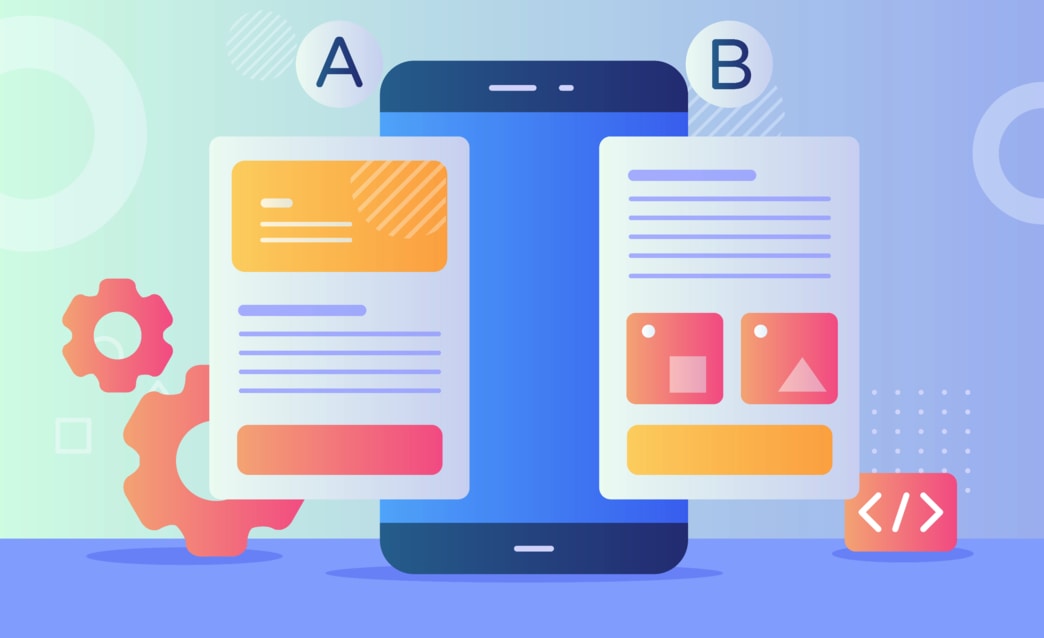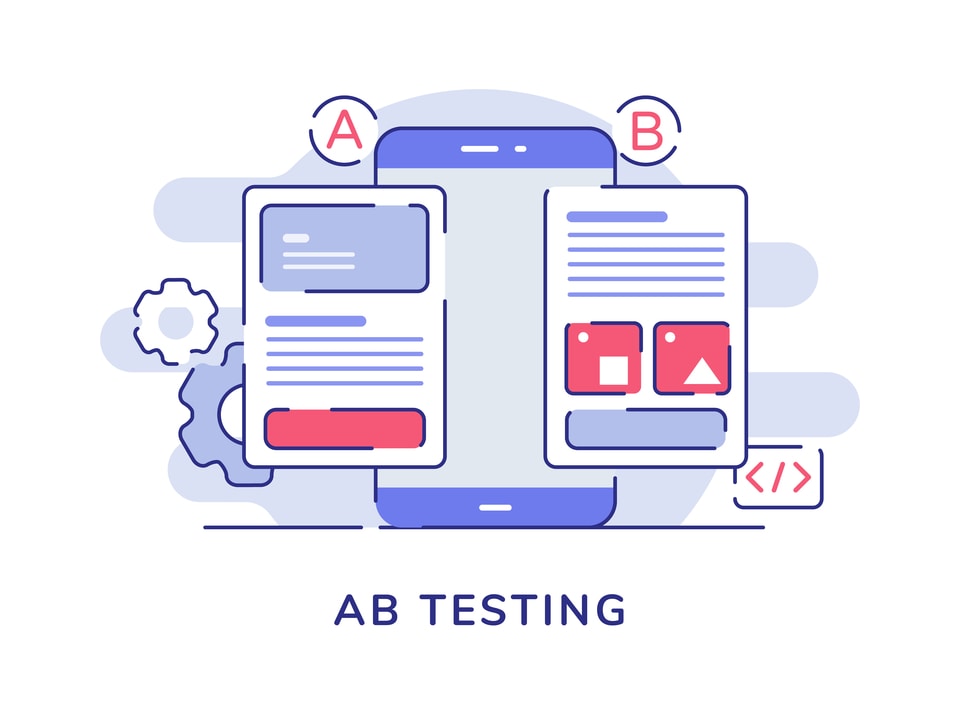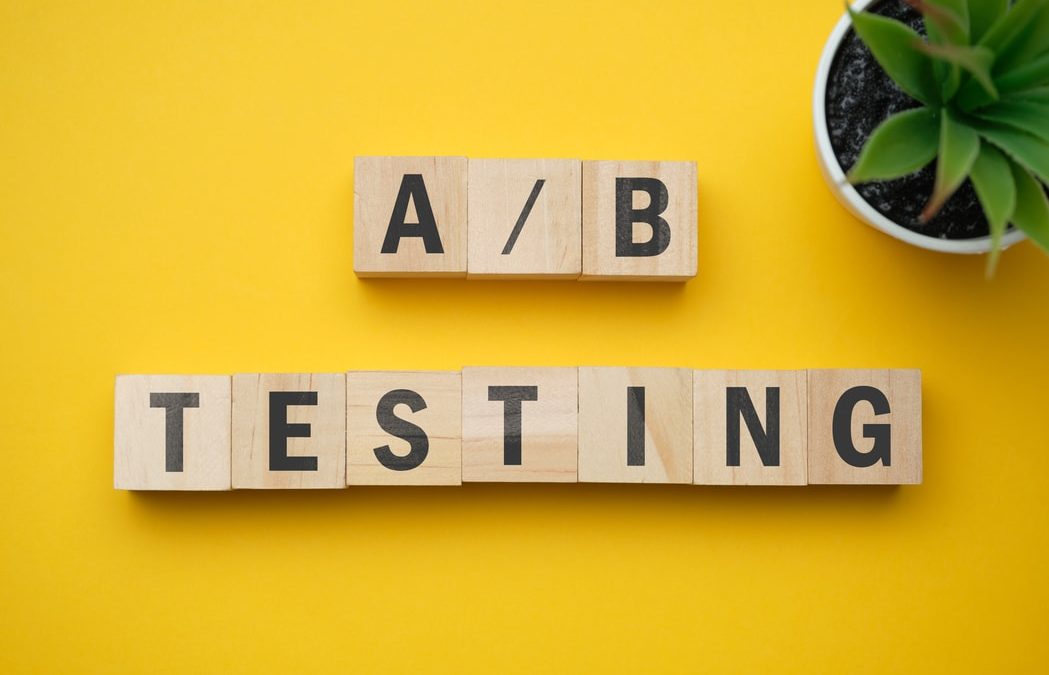A/B testing examines the effectiveness of two different versions of a design: the original (also known as "control") and the "B" version (also known as "variant"). Using this method, you can determine which is more effective at achieving the goal you want to attain after driving equal traffic to either.
Personalization is a data-driven strategy that involves providing the right content to the right user at the right time based on their history and where they are in the consumer journey. Marketers are consistently analyzing data to see how effective it is. Rather than determining the average, personalization seeks to serve the most relevant page in each traffic category. It doesn't rely on chance like A/B testing but instead on segmenting traffic based on demographics, behavior, referrer, and other criteria, presenting a page suited to those attributes.
Personalization and A/B Testing both have the same goal in mind, i.e., to improve the performance of a page. However, both have their ups and downs.
For example, You can optimize all you want using A/B testing, but you'll never achieve genuine ideal performance by building a progressively better average page. At the same time, you can personalize depending on crucial identifying information, but you don't have data for everything.
Every marketer desires higher traffic and improved conversion rates. A/B testing and personalization are just two methods for achieving this goal.
Personalization is a data-driven strategy that involves providing the right content to the right user at the right time based on their history and where they are in the consumer journey. Marketers are consistently analyzing data to see how effective it is. Rather than determining the average, personalization seeks to serve the most relevant page in each traffic category. It doesn't rely on chance like A/B testing but instead on segmenting traffic based on demographics, behavior, referrer, and other criteria, presenting a page suited to those attributes.
Personalization and A/B Testing both have the same goal in mind, i.e., to improve the performance of a page. However, both have their ups and downs.
For example, You can optimize all you want using A/B testing, but you'll never achieve genuine ideal performance by building a progressively better average page. At the same time, you can personalize depending on crucial identifying information, but you don't have data for everything.
Every marketer desires higher traffic and improved conversion rates. A/B testing and personalization are just two methods for achieving this goal.
Common Customer Experience Challenges
Pros:
● Helps Get Clear Evidence: It's simple to see how many users prefer site A to site B for completing transactions. The evidence is based on real-life behavior and concrete facts of the kind that money men adore (and can be presented in a simple-looking, complex hitting chart).● Allows Testing of New Ideas: If you have a novel idea for an existing website, A/B testing will show you whether it will work or not. However, before you can test it this way, you'll need to implement that large concept is complex code.
● Helps Optimize One Step At A Time: If you have a large or several sites, A/B testing is a great way to "patch" test by starting in a small corner and working your way up to the main pages. Can smaller sites with less traffic, on the other hand, afford to take a chance on real users by providing half of them a suboptimal site experience?
● Answers Specific Design Questions: Are green buttons better for your site's design than red buttons? A/B testing can answer this and many other questions because it allows the designer to experiment with different colors, button placement, page layouts, and graphics, all of which are good areas to improve a website gradually.
Cons:
● It can take a lot of time and resources: Setting up A/B testing takes a lot longer than other types of testing. Setting up the A/B system can be time and resource-intensive, but third-party services can assist. There may be countless discussions regarding which variables to include in the testing, depending on the company's size. Designers and coders will need to successfully work on double the amount of information once a set of variables has been decided upon. Furthermore, for low-traffic sites, tests can take weeks or months to produce conclusive results.● It only works in the case of specific goals: This type of testing is appropriate if you only have one problem to solve, such as which product page produces the best results. Pure A/B testing, on the other hand, will not yield answers if your aims are more challenging to measure.
● It doesn't improve a dud: If your site had usability issues, to begin with, and the variants are just iterations of that, likely, it will still have the same core weaknesses as your previous site. A/B Testing will not show these flaws or reveal user displeasure, and you will not identify the causes of the site's issues. It is only about B that A resulted in more sales. Identifying and resolving the original usability issue could be a lot faster and result in much better results.
● Could End Up With Constant Testing: That's all there is to it once the test is completed. The information is useless for any other purpose. Further A/B tests will have to start from scratch. Different sorts of testing will almost certainly be applied exclusively to the more successful site when the rejected version may have provided equally relevant information. Consider the following hypothetical A/B test run for a sweater company to determine the highest-converting sweater color for a hero image. Users who see the blue version see a significant increase in conversion rates. Green sweaters are also a good choice. The color red is the least effective. In traditional A/B testing, these results might lead you to show all users the winning blue sweater image, as it has the best probability of converting them. Let's assume 60% of your consumers preferred blue sweaters, 35% chose green, and 5% selected red sweaters. So, even if you've optimized for the majority, there are still 40% of visitors who aren't immediately drawn in by your hero image and are in danger of leaving your site. Personalization seeks to address the 40% "minority" problem by serving the most relevant page to each traffic segment (red to those who prefer red sweaters, green to those who prefer green sweaters, etc.) rather than the average.

Pros and Cons of Personalization:
Pros:
● Gives Every User a Personal Experience: Some of the most effective personalizations take place without the user even realizing it. The most compelling reason to employ personalization when designing a website is that each user receives a unique experience. In a world when there are so many options, this type of experience could be the thing that distinguishes your website and keeps a customer on board for the long haul. This leads to increased visitor involvement, increased client satisfaction, and improved conversion rates.● Offer better customer service: Users appreciate the personal connection and good customer service that comes with a custom-designed website. Personalization can make a user feel as though they already know you, your website, and your business better than they do. When anything is needed, users will often reach out to you fast and expect a speedy answer.
● Create consistency: Consistency across devices is created with a personalized website experience. The appearance and feel of the material are consistent across all devices, including mobile, desktop, and tablet. This appeals to people who do not want to be sidetracked by having to study the same stuff repeatedly.
● Drive Conversions and Increase Loyalty: Brands that develop individualized experiences for customers by combining modern digital technology and proprietary data receive a 6 percent to 10% rise in revenue.
Cons:
● You Don't Always Get It Right: When you address customers incorrectly and make a recommendation that offends their sensibilities, you risk hurting their feelings and losing them for good. Working with online data and algorithms is a challenging task.● It Gets Expensive Fast: It will cost you a significant amount of money, which is an unavoidable fact. You must accomplish all things you must achieve by collecting and analyzing data, creating profiles and personas, building a user list and base, and sustaining a team. You'll also need a design team capable of creating and developing these user experiences across platforms. In a word, that will not be a simple operation; it will necessitate your time, effort, and financial resources.You'll need to collect and analyze data, create profiles and personas, grow a user list and base, and keep a team (together with the algorithmic technology) working on new personalizations for users. You'll also need a design team capable of creating and developing these user experiences across platforms.
● Time-consuming Process: As I previously stated, website personalization will be a journey, and it will take time. Consider how much time and effort goes into researching the concept of customization before even sketching out the first wireframe. You won't be able to finish it in one or two days. Even if your website is already up, you must stay on top of consumer desires and preferences. Maintaining a set of available personalizations necessitates ongoing changes, updates, and a large amount of data storage and management, and you can't halt the process.
● Some Users Might Find It Creepy: Knowing so much about users has a wrong side as well. Users aren't always happy that you've discovered something about them. Many users find it alarming that a website knows specific details about them, and they are concerned about what brands and companies do with "personal" profiles and data. Being upfront about how you gather, keep, and use user information is the best thing you can do.
How Can A/B Testing and Personalization Work Together?
Many marketers view testing and personalization as separate initiatives when, in reality, they are the most effective when used in combination. You can get a lot more out of your marketing efforts once you realize this.
There are primarily three ways to combine both:
You could be losing out on a lot of conversions by not using a specific landing page. What exactly do I mean? Just because landing page A wins an A/B test doesn't mean it's the best landing page in the world. There are a variety of different behaviors at work here.
An E-commerce consumer, for example, may choose landing page B, but a SaaS customer may prefer landing page A. As a result, it's preferable to segment your audience to do more targeted A/B tests. The process of segmenting your traffic based on various factors is known as segmentation. It may appear more difficult at first than A/B testing, but the outcomes can be transformative.
Basic demographic segmentation, such as using data points like age and gender, to more advanced differentials like intent and life cycle stage, is segmentation examples. Email segmentation, landing page segmentation, and web personalization are examples of distinct segmentation types by a medium.
Use the information you have to divide users into segments for A/B testing. You can start thinking about where to personalize your site by looking at what information you already collect on users (and what you might enrich with 3rd party data tools). Then, for each segment, identify essential variables to test.
Women who enjoy yoga, for example, may respond better to a different landing page style than women who want cycling. Consequently, you'll be able to determine a preferred result for each group, which you may tweak to improve the user experience or increase conversions.
There are primarily three ways to combine both:
1. Audience Segments for A/B Tests:
Traditional A/B tests yield a one-size-fits-all result. Assume you're comparing the layouts of landing pages A and B. The A/B test yielded the following results: Landing page A receives a 60% signup rate while landing page B gets a 40% signup rate. Because page A performs better on average, you will continue to use it. But this is where we have a problem.You could be losing out on a lot of conversions by not using a specific landing page. What exactly do I mean? Just because landing page A wins an A/B test doesn't mean it's the best landing page in the world. There are a variety of different behaviors at work here.
An E-commerce consumer, for example, may choose landing page B, but a SaaS customer may prefer landing page A. As a result, it's preferable to segment your audience to do more targeted A/B tests. The process of segmenting your traffic based on various factors is known as segmentation. It may appear more difficult at first than A/B testing, but the outcomes can be transformative.
Basic demographic segmentation, such as using data points like age and gender, to more advanced differentials like intent and life cycle stage, is segmentation examples. Email segmentation, landing page segmentation, and web personalization are examples of distinct segmentation types by a medium.
Use the information you have to divide users into segments for A/B testing. You can start thinking about where to personalize your site by looking at what information you already collect on users (and what you might enrich with 3rd party data tools). Then, for each segment, identify essential variables to test.
Women who enjoy yoga, for example, may respond better to a different landing page style than women who want cycling. Consequently, you'll be able to determine a preferred result for each group, which you may tweak to improve the user experience or increase conversions.

2. Rule-Based Personalization Experiments
When it comes to personalization, the majority of marketers (68%) use a rule-based strategy. This suggests they're peeling back another layer, going deeper into their target demographics. Behavioral or environmental clues are used in rule-based personalization.Users who fulfill a set of criteria are shown A/B testing. Users who have spent less than $500 at your online business, for example, may be subject to a rule. You may test whether discount or offer is preferable to show these users: offer A or offer B.
This would be an efficient test if your goal were to enhance the average order value of this segment. You'll need to set up rules in an automated personalization tool to conduct this type of test.
3. The Future: Predictive Personalization
Personalizing for every individual is the only thing greater than personalizing for segments. It's the most challenging task to complete, but with great struggle comes great success.To fully personalize an individual, you'll need to use machine learning to achieve predictive personalization. What's the deal with that?
Your website is constantly monitored by a machine, which optimizes the experience for each visitor. It learns about your visitor (and customer) as they navigate your site, and it adapts the experience in real-time to meet their specific needs.
As visitor tastes and habits change over time, this is incredibly beneficial. As a result, even if you A/B test using rule-based personalization, you can't guarantee that the outcome will be the best over time. What is effective today may not be effective in a month or even a year.
This method has two important implications: first, the optimal experience to present each visitor may alter over time as your marketing efforts evolve. We're all exposed to this real risk with A/B testing, and without frequent re-testing, it'd be impossible even to notice it's happening.
A machine observes and adjusts to the present optimal experience using predictive personalization. We're future-proofed against changes in our marketing activities, both our own and those of our competitors.
Grow Your Business Combining A/B Testing and Personalization
Personalization and A/B testing are not two different things. But they can be integrated to provide visitors with a better, more relevant experience.A/B testing different audience segments is simple and successful, while personalization based on rules goes a step further by establishing assessments on behavioral and contextual signals. As of now, predictive customization with AI is the most advanced way of combining both.
In conclusion, when A/B testing and personalization work together, you'll see an increase in engagement, conversions, and goodwill from your consumers. As a result, you will have the best of both worlds by showing each predefined segment the appropriate experience while also knowing that the knowledge you're offering is proper.
Growth Hackers is a growth hacking agency that focuses on clients’ growth. How do we do it? We help startups, small-to-medium business & entrepreneurs drive qualified traffic to their websites and apps, automate their lead generation, improve conversions, increase their revenue and get them a positive ROI in no time. If you’re looking to grow your business, give us a shout at Growth Hackers and we can start helping your online business.




